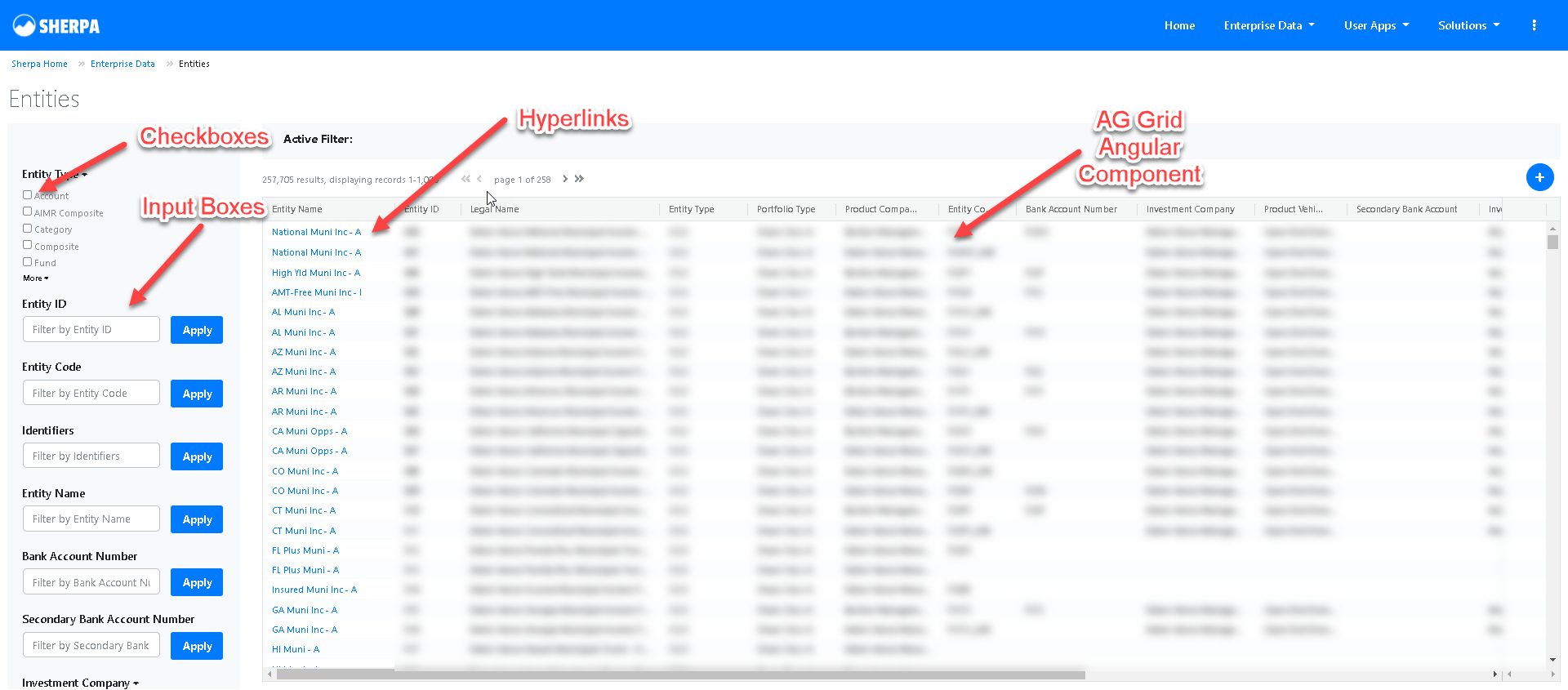Eaton Vance Investments (acquired by Morgan Stanley)
Sherpa
Sherpa was designed to give businesses peace of mind by consolidating critical data from multiple sources into a single, accessible platform. Through a user-friendly browser interface, stakeholders could log in to their dashboards, query one or multiple databases, and manage key data efficiently in a centralized location.
To improve the product’s usability, I analyzed the existing Sherpa interface using Matomo session data and direct user interviews. This research uncovered several core issues that limited engagement and efficiency:
Customization and Reusability: Users needed reusable components and customizable dashboards, along with the ability to save searches directly from their dashboards for quick future access.
Readability: Key metrics appeared in small text that was difficult to read, especially on mobile or outdoors. Users requested larger, more legible numbers to improve visibility.
Responsiveness: The interface lacked a responsive layout, requiring horizontal scrolling without indicators. On mobile, critical data points like securities and performance metrics were often hidden from view.
Navigation and UI: The overall design felt unintuitive and visually unappealing, making it difficult for users to find important features or complete tasks efficiently.
After identifying these gaps, I collaborated closely with our UX designer to produce updated design concepts that directly addressed each pain point. I then created a comprehensive requirements document and broke down the work into actionable Jira stories for our engineering team. This structured approach streamlined the redesign process and ensured the delivery of a cleaner, more intuitive interface that improved efficiency, readability, and user satisfaction.




Leveraging Matomo to Improve Sherpa’s User Experience
To better understand user behavior within Sherpa, I implemented Matomo to collect and analyze detailed interaction data. This allowed me to track navigation patterns, identify friction points, and observe how users engaged with specific features across the platform. These insights revealed key usability gaps and informed design decisions, helping prioritize improvements that would create a more intuitive and efficient user experience.
Implementing Reusable, Customizable Components in Sherpa
To enhance Sherpa’s usability and scalability, I partnered with our UX designer to design and implement reusable components that empowered users to fully customize their dashboards and perform key CRUD (Create, Read, Update, Delete) operations with ease.
We introduced a library of interactive, user-friendly elements that included:
Checkboxes for quick multi-item selection
Icons to improve visual navigation and distinguish actions or data types
Add and Reorder buttons to let users manage and arrange dashboard elements
Grid components and AG Grid Angular tables for structured data display with sorting, filtering, and pagination
Hyperlinks for fast access to related content and external resources
Input fields for entering or updating data directly
Saved searches to allow users to store and quickly reuse common queries
These components were designed to be modular, scalable, and intuitive, giving users the flexibility to shape their dashboards to their specific workflows. By focusing on reusability and customization, we significantly improved the platform’s efficiency, readability, and overall user experience.





